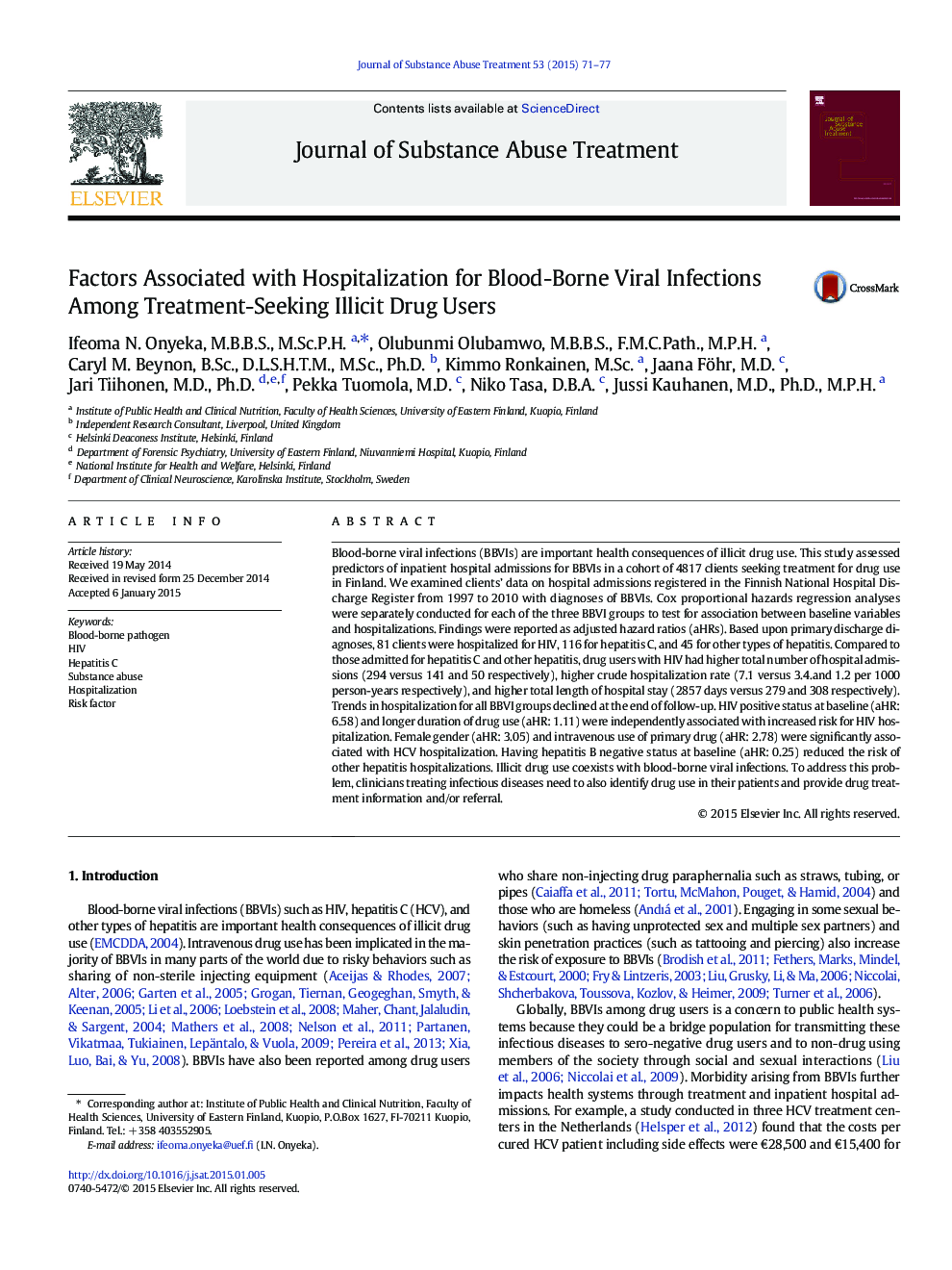| Article ID | Journal | Published Year | Pages | File Type |
|---|---|---|---|---|
| 329626 | Journal of Substance Abuse Treatment | 2015 | 7 Pages |
•More clients were hospitalized for HCV than for HIV and other types of hepatitis.•HIV group had higher CHR, and higher total admissions and total hospital stays than others.•Trends in hospitalization for all BBVIs declined at the end of follow-up.•Various risk factors were identified. Measures to tackle BBVIs would require combination of efforts from different health professionals.
Blood-borne viral infections (BBVIs) are important health consequences of illicit drug use. This study assessed predictors of inpatient hospital admissions for BBVIs in a cohort of 4817 clients seeking treatment for drug use in Finland. We examined clients’ data on hospital admissions registered in the Finnish National Hospital Discharge Register from 1997 to 2010 with diagnoses of BBVIs. Cox proportional hazards regression analyses were separately conducted for each of the three BBVI groups to test for association between baseline variables and hospitalizations. Findings were reported as adjusted hazard ratios (aHRs). Based upon primary discharge diagnoses, 81 clients were hospitalized for HIV, 116 for hepatitis C, and 45 for other types of hepatitis. Compared to those admitted for hepatitis C and other hepatitis, drug users with HIV had higher total number of hospital admissions (294 versus 141 and 50 respectively), higher crude hospitalization rate (7.1 versus 3.4.and 1.2 per 1000 person-years respectively), and higher total length of hospital stay (2857 days versus 279 and 308 respectively). Trends in hospitalization for all BBVI groups declined at the end of follow-up. HIV positive status at baseline (aHR: 6.58) and longer duration of drug use (aHR: 1.11) were independently associated with increased risk for HIV hospitalization. Female gender (aHR: 3.05) and intravenous use of primary drug (aHR: 2.78) were significantly associated with HCV hospitalization. Having hepatitis B negative status at baseline (aHR: 0.25) reduced the risk of other hepatitis hospitalizations. Illicit drug use coexists with blood-borne viral infections. To address this problem, clinicians treating infectious diseases need to also identify drug use in their patients and provide drug treatment information and/or referral.
